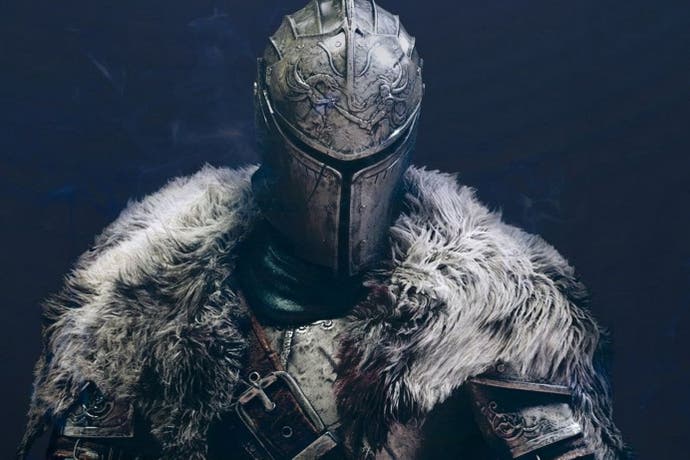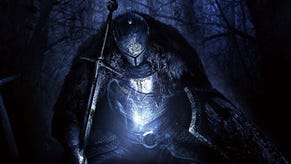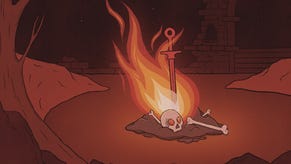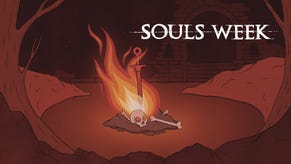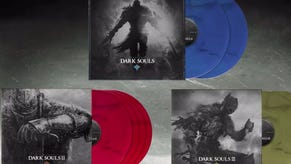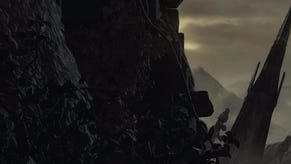Tech Analysis: Dark Souls 2: Scholar of the First Sin
The definitive edition? The PS4 remaster stacked up against the PC original.
The PlayStation 4 release of Dark Souls 2 is poised to be the best way to revisit Drangleic on console - a true 1080p title adorned with countless visual upgrades over last-gen. However, the Scholar of the First Sin remaster is also due for PC; a DirectX 11 reworking that adds many of the enhancements seen on PS4. With access to more powerful hardware, this could make it the definitive release, but as PC owners already enjoy the current game at 1080p60 and beyond, is the upgrade really necessary?
Having dissected the Forest of Fallen Giants area already, we now focus on larger, wider locales like Heide's Towering Flame and No-Man's Wharf. We boot up the original PC version (with all settings set to high, and no mods) to see how these levels stack up against Scholar of the First Sin on PS4. Both are played side-by-side to show From Software's efforts to remix the formula - a state of affairs that shows some promise for the forthcoming upgraded PC release.
The enemy placements in each area are the most noticeable change to the game. As a well-versed example, Heide's Tower of Flame consists of the same giant knights that Dark Souls 2 fans will remember, each in the same position. But dispersed between them are new, dormant knights who rouse based on your progress through the game overall - or if attacked. Winding your way up to the blue cathedral, a giant wyvern also now sprawls in front of the raised drawbridge - a real curveball for those expecting just another knight.
It's a far more complex challenge for both the player and the hardware at hand. Not only is enemy density increased, but the AI is altered as well. Older consoles benefitted from the strict regimenting of where each knight could go, retreating if they passed a certain point once a player ran too far ahead. On PS3 and 360, this prevented too many enemies clustering up and thus buckling performance, but all bets are off in the Scholar of First Sin PS4 code we've played.
Enemies are far more persistent now, and in one spot (shown in our PS4 vs PS3 frame-rate comparison below), they gang up into groups of 12, as opposed to the usual four. It's a chaotic factor that will push GPUs harder in the revised PC release, though the PS4 does an amicable job of holding up, with only a few dips to the mid-50fps point.
Looking to the visual benefits, we'd be remiss to overlook the influence superstar modder Durante has had on the PC game. Though an unofficial work-around, his GeDoSaTo program lets players super-sample the game for better image quality, tweak its ambient occlusion, and even add post-process effects like a bokeh depth of field (DOF). Soon after the PC game's release, developer From Software stated its surprise at the mod's popularity - and curiously, the team now brings its own twist on some of these features to Scholar of the First Sin.
First up, Dark Souls 2's lighting and shadows get a sizeable overhaul in the upgraded Scholar edition. PS4 textures and geometry are a match for the original PC version at its highest settings in almost every case. However, due to the physically-based setup of the game's lighting, many of these surfaces appear transformed under the new lighting model. Grander areas like Heide's Tower of Flame are brighter, and texture details benefit from added contrast - making each divot and crack in nearby rocks pop out.
Added to that, effects like soul trails, exploding bombs, and magic spells all light up the nearby environment on PS4 (while the current PC edition leaves walls unaffected). As a result, it's difficult to recognise the original texture map unless you look close, but the pixel detail is always the same when put under the magnifying glass. It's a gorgeously worked effect - one that stamps your impact on the world as you battle through it.
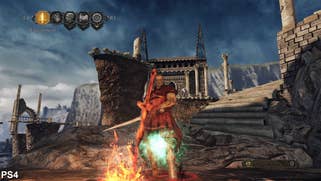
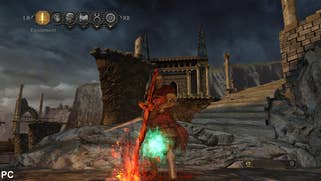
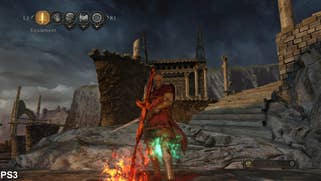
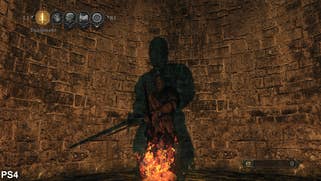
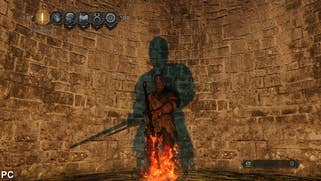
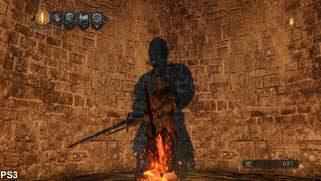


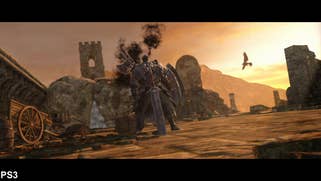
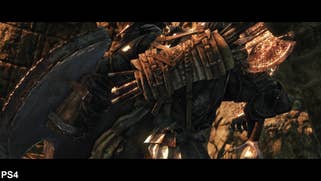
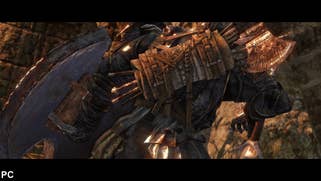

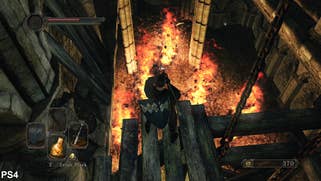
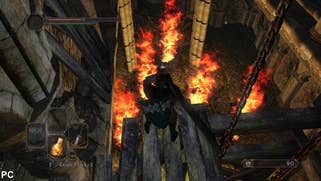

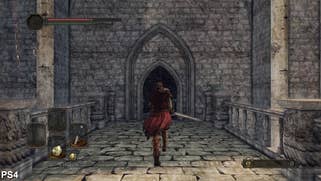




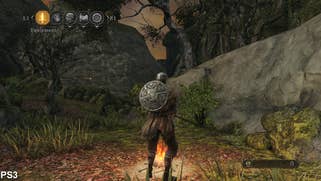
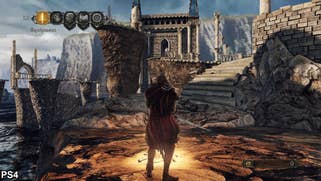


Ambient occlusion is much improved too. As with the last-gen releases, the current PC edition (based on DirectX 9) produces a distracting shimmer beneath grass, with shaded elements rendered at a lower resolution. This is likely a hangover from the curtailed PS3 and 360 editions, but at resolutions of 1080p and above, this sticks out like a sore thumb. A more refined solution is now locked in for Scholar of the First Sin, making each pool of shade blend in smoothly with the surrounding area.
The flickering artefacts are gone as a result - a point that bodes very well for the eventual PC release of the revised game. On the downside, characters still produce unnaturally thick silhouettes when stood near walls (also paired with an odd halo effect), which suggests a screen-based approach is in effect. But on the whole, it's a definite improvement, and a possible sign that From Software is responding to the PC community's efforts to address its current deficiencies.
The PS4 version of Scholar of the First Sin pushes texture filtering to the extreme too, taking the anisotropic method used on PC's highest setting. But based on what we're seeing so far, the new release makes no real headway with the pixel crawl on water shaders or grass. Instead we get a match for the current PC version's post-process AA on PS4, failing to effectively tackle the temporal flicker when panning across these elements. A PC upgrade has the opportunity to add a larger suite of options to treat this via more advanced anti-aliasing techniques, which we would hope to see as a replacement for the current Dark Souls' non-descript on-off toggle.
On the plus side we see a change to Dark Souls 2's depth of field. A bokeh form of the effect is now instated on Scholar of the First Sin, which lightly distorts out-of-focus points of light. The effect is subtle, but mimics the characteristics of a camera lens when a bonfire's embers are placed in the foreground - while the vanilla PC release simply blurs it over. The trick isn't used for the game's background elements based on the first few areas, but it's a stylish addition.
Based on what we've seen to date, Dark Souls 2 on PS4 paves the way for a superb upgraded PC release. Given the changes to Scholar of the First Sin's lighting, shadows, effects, and depth of field, we hope to see a broader selection of graphics options in the DirectX 11 build. However, a chief factor here will be how much the upgrade will cost (if anything) to those who already own the PC version - with early indications suggesting that a charge will be incurred.
Bandai Namco won't comment on this for now, but it could be a contentious issue for PC fans who have enjoyed technical updates and performance tweaks in other games at no extra cost. Either way one thing is clear: for enthusiasts of Dark Souls 2, the visual tweaks and new enemy placements make this a difficult one to miss. Judging by the areas shown so far, it's an update that revels in toying with the expectations of the initiated fan - a compelling prospect for those already planning a second play-through, provided the price is right.
